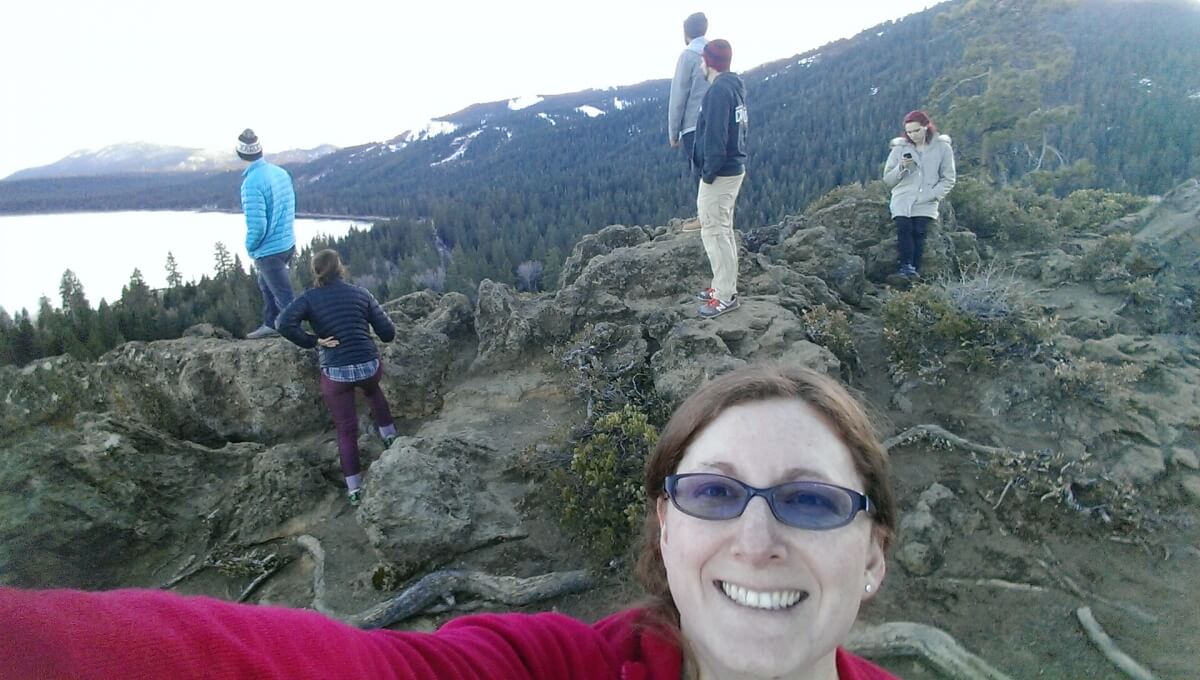We may be a small company, but that only makes a company retreat so much more important. I think many times we under-estimate the importance of time with your co-workers where you are getting to know eachother on a personal level. Company culture is so important and can really make or break you, so spending time talking about ourselves, as well as what is working (and not working) at the office, is essential to sustainable growth.
Company retreats often fall somewhere on a spectrum of too much business -to- too much touchy-feely. If you can build a retreat that falls somewhere near the middle you will have the strongest outcome. Below are the phases of our last company retreat (which I think was pretty successful if I do say so myself).
Phase 1: “Hanging Out”
 Before delving into the ‘planned’ activities, it is important to have some time where people arrive, chat and relax. It is best to still have loose organization so that no one feels awkward. We did this by going on a short walk/hike to a viewpoint and then by cooking a meal together and playing some card games. If you are working with a larger group 15-30 or more, then you may want to pose a question to the group and ask them go around finding out different people’s answers. Ultimately, you just want a simple way to get them chatting with eachother.
Before delving into the ‘planned’ activities, it is important to have some time where people arrive, chat and relax. It is best to still have loose organization so that no one feels awkward. We did this by going on a short walk/hike to a viewpoint and then by cooking a meal together and playing some card games. If you are working with a larger group 15-30 or more, then you may want to pose a question to the group and ask them go around finding out different people’s answers. Ultimately, you just want a simple way to get them chatting with eachother.
Phase 2: “The Retreat”
We broke our retreat into 3 sections. We began by sharing some personal stories, then did an exercise to help us understand our personal tendencies a little better, and then moved into how to improve Rootid as a whole. By building the activities upon another in this way, we were able to create a safe and open space where we all felt heard and respected, before moving into some of the conversations that were going to get more difficult.
Section A: Personal Stories This activity combines a few icebreakers I have done overtime. I asked everyone to look through their phones and send me 3 photos that they really liked and thought would be fun to share with the group. We then did a group slideshow and as each person’s photo came up, they talked about it and why they wanted to share this particular image. It was really neat to learn more about each other in this format, especially since our group happens to have a few amateur photographers in the mix. Sample Images: The photo to the top right is a miniature snowman that was built during our first snow storm and the photo at the bottom right was taken at Chinese New Year in San Francisco a few years ago.)
This activity combines a few icebreakers I have done overtime. I asked everyone to look through their phones and send me 3 photos that they really liked and thought would be fun to share with the group. We then did a group slideshow and as each person’s photo came up, they talked about it and why they wanted to share this particular image. It was really neat to learn more about each other in this format, especially since our group happens to have a few amateur photographers in the mix. Sample Images: The photo to the top right is a miniature snowman that was built during our first snow storm and the photo at the bottom right was taken at Chinese New Year in San Francisco a few years ago.)
Section B: Personality Types & Working Styles
When communication breaks down in a work (or personal) environment, it is usually because people do not understand themselves and/or their co-workers very well. Maybe they are having trouble explaining themselves clearly, or are having a difficult time being empathic to the experiences of those around them. Often, if you spend a little time understanding how you best share and absorb information/”makes you tick,” it can make relating to those around you that much easier. In our case, we each did an online version of the Myers-Briggs Personality Test, read through our results individually, and then spent time discussing how our tendancies effected our interactions both at work and in our personal lives (where appropriate).
Section C: Company Strengths & Weaknesses/Areas For Improvement
Our next activity was difficult at times, but really helpful for the growth and improvement of our company. Talking about what is working and what is not, is not always easy, but since we had already laid a good foundation for open and warm conversation, it went pretty smoothly. To begin this activity, we each took a bunch of small slips of paper and spent 10-15 minutes writing as many strengths and weaknesses as we could come up with— placing them in 2 piles. We then went through each slip individually, taking turns reading them aloud. We discussed each one briefly, positive or negative, and then placed important “weaknesses” into a new pile to have more indepth conversation about. By the end we had 3 clear areas for improvement and had come up with actionable items for each. I am sure there were more than 3 areas of weakness, but it is important to narrow things down and focus on key issues so that you can actually accomplish something tangible. As much as talking is good, talking without focus, discipline and purpose does not make for a successful retreat.
Phase 3: “Looking Forward”
There are many ways to end a retreat, but I have found time for self-reflection and an activity that helps everyone ‘look forward’ brings nice closure. Our final activity was writing a letter to our future selves. Now that we had shared, reflected, learned and planned, it was good to look ahead and think about where we wanted to be in 2-3 years personally and professionally. These were not letters we were sharing with eachother—only our future selves. It is a quick 20 minute activity, but ties things up nicely and gives everyone a further sense of purpose and accomplishment…we even found a website that will email you your letter on a given day in the future: https://www.futureme.org/
General Notes:
- Take plenty of breaks and have enough quiet time. People can get over stimulated during retreats, so the time in between activities is just as important as the activities themselves.
- Cook meals together when possible—preparing food and chatting is invaluable.
- Find opportunities for walking, hiking or some other outdoor activity. Getting a little out of breath relaxes the mind.
